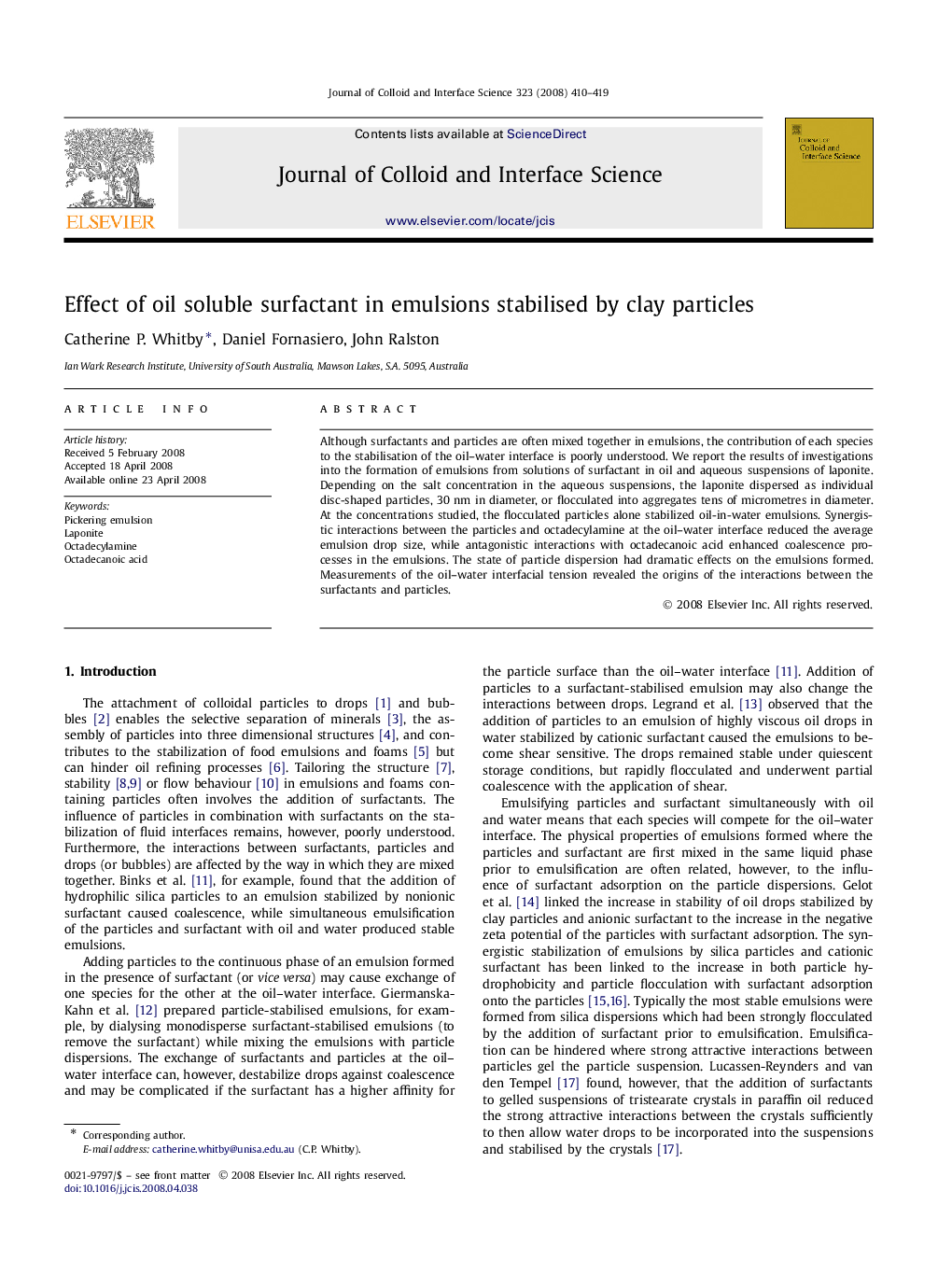| Article ID | Journal | Published Year | Pages | File Type |
|---|---|---|---|---|
| 611437 | Journal of Colloid and Interface Science | 2008 | 10 Pages |
Although surfactants and particles are often mixed together in emulsions, the contribution of each species to the stabilisation of the oil–water interface is poorly understood. We report the results of investigations into the formation of emulsions from solutions of surfactant in oil and aqueous suspensions of laponite. Depending on the salt concentration in the aqueous suspensions, the laponite dispersed as individual disc-shaped particles, 30 nm in diameter, or flocculated into aggregates tens of micrometres in diameter. At the concentrations studied, the flocculated particles alone stabilized oil-in-water emulsions. Synergistic interactions between the particles and octadecylamine at the oil–water interface reduced the average emulsion drop size, while antagonistic interactions with octadecanoic acid enhanced coalescence processes in the emulsions. The state of particle dispersion had dramatic effects on the emulsions formed. Measurements of the oil–water interfacial tension revealed the origins of the interactions between the surfactants and particles.
Graphical abstractFigure optionsDownload full-size imageDownload as PowerPoint slide
